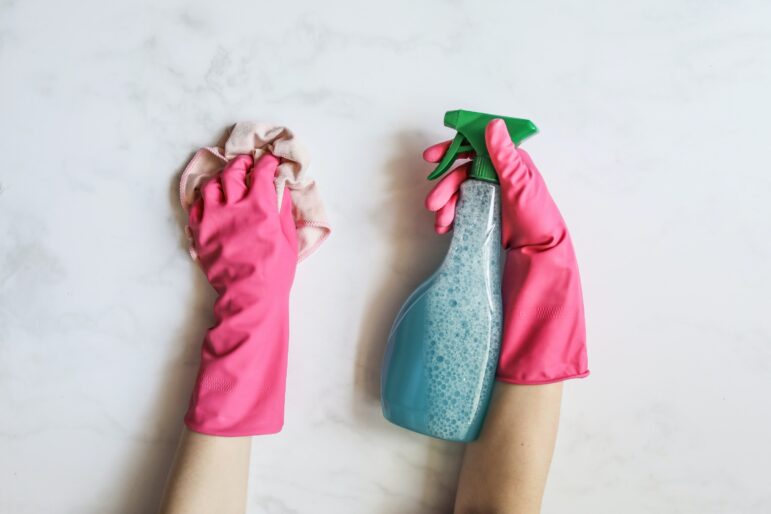Sustainability continues to be a hot topic in the commercial cleaning world, with products making claims from biodegradable to organic to eco-friendly. However, it can happen that those “green” products, while better for the environment, pose a greater threat to the building occupants and cleaners.
It is easy to assume that products that are better for the environment are also better for the people using and experiencing them, but that is just not the case. Take an all-purpose cleaner as an example. While it may be eco-friendly, meeting a low VOC standard, it may also be corrosive, meaning it can cause damage if it comes into contact with eyes and skin.
So how can you work towards your environmental goals while maximizing safety for your team? There are a few things you can to look for on the label that fall into both categories:
- Products featuring “non-toxic” seem like a good choice, however, this term is not regulated and can be used by companies freely. Similarly, word like “natural” or “green” can be misleading. Use organizations like ToxicFree Foundation to confirm whether this product uses “green light ingredients” that are safe and healthy for use.
- Rather than wading through the vocabulary, start with certifications like Green Seal or ECOLOGO®, a Canadian certification given to products with verified reduced environmental impact. This ensures that the product meets the standards set out in the certification with minimal health effects.
- Choose products where every ingredient is disclosed so you know exactly what you’re getting. Avoid unidentified “fragrances” which can often contain ingredients that can be harmful.
- Stick with unscented and chemical-free products. Fragrances often come from VOCs, which can cause sensitivities and worsen the indoor air quality, making them less safe for those who come in contact with them.
- Stay away from common VOCs seen on labels, such as benzene, ethylene glycol, formaldehyde, methylene chloride, and toluene. Look for these ingredients on the labels of the products you are already using to see if you can swap them out.
While lowering our carbon footprint is crucial, it can’t happen at the cost of employee safety. Be vigilant in reading and understanding the labels for the products you are using, educate your staff, as you work towards meeting your environmental and safety goals.









